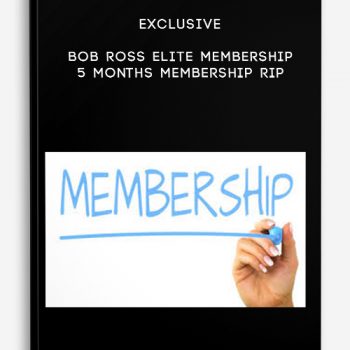
Body Language by Kevin Hogan
Description
Frightening Messages You Didn’t Mean to Send
Attentive Body Language. istock.com/Moncherie You’re having what you consider to be a pretty important conversation over dinner.
The ambience?
Excellent. In fact perfect. White candles…just lit, white wine, a few lillies. You look good.
Everything is running smoothly this evening. You couldn’t have asked for better. The new suit fits particularly well and the color, much to your surprise, worked.
You’ve been talking for what seems like 5 minutes. You got on a roll and stayed there. You painted a vivid picture and you can tell she is there.
She’s sitting right by you and she goes to give you a kiss. Excellent. She smiles and returns to her wine then becomes completely unaware that she is fixing her hair.
You unconsciously mirror her behavior.
You don’t even think about it because EVERYTHING is going so perfectly tonight! You smooth your hair.
She consciously recognizes that primping and for an unknown reason she INSTANTLY feels uncomfortable and a little nervous.
Inside of your mind you are playing with how to phrase the BIG QUESTION. Then you just say it. How could it go wrong?!?!
“I think we should go for it.”
You smile a deep heartfelt genuine smile.
She instantly thinks, NO WAY!
It’s out of nowhere and she has no idea why she feels that way. She’s a little surprised, but she has come to trust her gut on all things.
She states the response we all say when we are fearful and know we probably shouldn’t be.
“Let me think about it.”
You’re dumbfounded.
90 Miles an Hour … to Instant Stop
Everything was going well, very well, right up until this second.
“Sorry?”
“I said, I’ll think about it.”
You heard right. She is going to think about what not ten minutes ago she said, “I definitely want to do that!”
What the heck happened?
The expression on your face is quizzical and perhaps a bit stunned.
She instantly spots the furrowed brow, slightly open mouth, and the eye lids drawing closer to each other as your chin pushes to the right just a bit while your head tilts slightly back and to the left.
Now she has a stream of thoughts and they are all negative.
He thinks I’m being stupid? Why are you giving me that look? What a jerk.
“What’s wrong?”
Trigger Body Language. istock.com/Moncherie The tone is not terribly distrusting or hostile, but you’ve just experienced a temperature change of arctic proportions. You snap out of it.
“Nothing at all.”
But it’s too late.
Ten minutes ago she was definitely going to do it.
Now everything has changed.
“When would you like me to call you about it?”
You try to recover. You weren’t prepared for her chilly response. Now you have to try and capture that warm breeze again, but you intuitively and rightfully know that isn’t going to happen.
Everything had been moving ideally. Perfect. Nothing could have gone wrong, but a sinkhole couldn’t have swallowed a car in Chicago faster than she sucked the energy out of your brain.
“Doesn’t matter. Sometime next week I guess,” the temperature continues to go down.
He’s really trying to pressure me. I don’t like it. I’m not sure I even like him. I think I was wrong about him.
What happened?
How can everything go well and then INSTANTLY turn without you ever having said a negative word…or no words at all??!!
The unseen body language signal…
Careful: You just sent the FEAR Signal!
What could possibly have gone wrong?
Relationship Body Language You fiddled with your hair for 1 second while you were delivering “the closing statement.”
She has been around thousands of humans in her life. She has no idea that her brain has connected people who she’s listening to and the triggers of the one person who lied to her when she smoothed her hair years ago. She doesn’t remember it. She wouldn’t remember it. It’s long buried from consciousness. But the hidden in plain sight Anxiety Trigger remains and probably will for the rest of her life.
You did absolutely nothing wrong.
You smoothed your hair while asking her to go for it and her brain shot out a gut kick of adrenaline and cortisol release that changed her nonconscious liking to nonconscious fear, to conscious fear, to politely backing off and simply hating you.
1 second.
You couldn’t have known until today.
And now you know.
Body Language Signals: Delivering the Message with Elegance and Safety
When you deliver a message that matters, you don’t touch anything. You don’t touch the wine glass. You don’t touch your glasses. You don’t touch the table. You don’t touch a fork. You don’t touch…anything. These are all COMMON FEAR TRIGGERS for people in conversation to experience.
Every single day people miss opportunities in all aspects of life by switching “yes” to “no” through internal triggers.
You simply tripped her “Fear Switch.”
You wouldn’t have meant for it to happen in a million years. Obviously. But her gut directs her brain, and her brain, in this case, is directing her mind, and that means you are hearing, “no.”
She’ll go home or visit a friend and explain what happened. She will tell her friend you were rude and impossible to tolerate.
When asked for specifics, she won’t be able to give even one.
“I don’t know, I just got a bad feeling about him. He’s a bit of a jerk.”
“I thought you wanted to go for it with this guy?”
“I did but he blew it. I saw who he really is.”
The girl went from experiencing deity to Dante in the Inferno in one split second.
People ask me all the time, “what are the most important body language signals?”
Answer?
“It’s the one that triggers a cortisol release in the brain. It’s the one that kicks in the fear and anxiety that you couldn’t have known without having watched a video of the person’s life.”
If you’re going to “gesture” while communicating the big suggestion, it better be intentional, certain, and illustrate the proposal brilliantly.
What’s that mean?
Body Language Fear Triggers
Presentation Skills. istockphoto/izusek Common fiddling and gestures are the most commonly experienced fear triggers. If a person hears 100 positive things and 20 negative things over a year where the communicator makes any specific gesture (a touch to the nose, straightening of the hair, touching the lips, wetting the lips, rubbing the eyes, scratching the ear), the 20 negatives overwhelm the 100 positives. 100 positives is like 100 goldfish in an ocean of 20 negative Great White Shark experiences.
Recognizing their nonverbal cues matters. It can matter a lot.
But the reality is that being aware of YOUR RESPONSE & BEHAVIORS to their nonverbal cues which they then observe, are really where problems begin. This is the most common place for “yes” to become “no.”
Some common body language signals that trip you up?
Learn Body Language: Break it Down
Mirroring their behavior can help build rapport. It can create simple bonding. But it can also backfire. This doesn’t happen because someone becomes aware of your mirroring them. That moment might happen once in a lifetime.
The beginning point of disaster is when they have a negative reaction triggered by a gesture or cue you offered up, probably nonconsciously. You didn’t know it happened. You didn’t think anything. You didn’t mean anything. You didn’t consciously do anything. You simply reacted as a normal human does and it happened to be one of those things.
And it goes further.
Body Language Strategy: Acute Awareness
As you observe people’s nonverbal communication, you must be present and IN the present conscious moment. They are not. You could ask them, “Are you here?” and they of course will emerge from nonconsciousness and say “yes.”
But the fact is that they are barely here. You must be present and aware of their behaviors because if you like this person, you’ll naturally yawn when they yawn. That could be a great thing. Most of the time you could bet on it.
But…don’t kid yourself into thinking that one person catching another person’s yawn IS a liking signal. It CAN BE. IT MIGHT BE.
Bodies don’t read popular self-help literature about body language.
They simply react to one stimulus after another. People rarely react positively.
They can. It does happen. It’s not all that common. For every 100 negative “reactions”, there are perhaps 5 positive reactions.
How can you possibly know all the body language cues people exhibited while communicating in some negative fashion with the person you are talking to right now?
Obviously you can’t, but you and I can make some broad generalizations.
Decoding Body Language: Negative Gestures to Avoid
Negative Body Language Signals. istock.com/perkmeup You can predict that most of the time someone was pointed at in their life, the feelings the person exhibited in the most intensely bad moments were indeed negative.
You can predict that most of the time someone saw people with an angry expression on their face, they themselves were not experiencing anything good.
(This is a challenge I have. I tend to scowl when I’m intensely focused. My look of determination looks like a lot of people’s “I want to kill you right now,” look.)
You can predict that an elevating volume of voice is generally negatively experienced by most people. What you are certain is passionate is felt as antagonizing by more than not. This is true regardless of the content.
Reading Body Language: Brains are Trigger Dependent
They don’t think. They aren’t thinking right now. At least not yet.
They simply experience triggers. They certainly do absorb information, but the body’s job is to keep you away from fear. That is the primary objective.
Once your mortality is confirmed, the body will then generally seek out comfort, food, or sex.
The key point here is to recognize that you can be emotionally intelligent enough to interpret their reactions to you…and they almost certainly won’t be.
In no way does this mean you are in “complete control.” On the contrary, you haven’t seen a complete video of every moment of that person’s life. You have no idea which 100 gestures and cues are the biggest negative triggers for them.
You also have no assurance on which few gestures or cues might actually be a positive trigger.
And knowing a few positive feeling triggers can be a very good thing, indeed.
Let me give you a couple of those positive triggers right now.
Body Language: Triggering positive feelings …
Body Language Strategy: Turn TheirFear into Excitement!
Positive Body Language. istock.com/lisegagneWhen you and I hang out with someone “new”, our conscious mind is far more alert than it typically would be. If someone is conscious 10% of the time, their conversation with you will probably show them to be in consciousness as much as 30% of the minutes you are with them. That heightened sense of awareness is critical.
The heart beats faster when “new people” are around.
“Excitement” is often felt as “fear” and “fear” is every now and then felt as “excitement” because they are essentially the same thing.
The difference is the interpretation of the conscious mind briefly checking on the nonconscious body experience.
How do you cause people to consciously experience their “fear” as “excitement?”
You have to catch it early. You have approximately one second.
“Cool?!”
“Exciting?!”
“Nice?!”
“Wow!”
Pick a word from an ordinary deck of words. It needs to be articulated quickly and the accent on that last sound or letter must be experienced with a rising pitch in your voice.
When with “new people,” we are much more present than we are with old people where we tend to be comfortable and run old patterns (good or bad) of behavior, instantly falling back to nonconsciousness.
Returning to nonconsciousness in this context simply means returning to whatever has occurred in the environment that is comfortable and/or familiar. Point? There is no imminent threat present. The brain turns on as the mind rests or is distracted by something else.
Bodies don’t like to be in consciousness because being conscious requires the experience of STRESS.
Body Language Signals: Predictably Positive
OK, another positive body language trigger?
Remembering that every single person is different, there are some other cues that are predictably positive.
THINK about this in every conversation you have:
When your face, your eye level is closer to the ground than that of the other person, they are more likely to experience control, comfort and possibly even feelings of love and connection.
Why?
Positive Body Language. istock.com/lovleah When you were really little, your Mom or Dad probably got down low to look at you when they spoke to you. If you had a crummy Mom or Dad, this probably didn’t happen, but most people have generally positive experiences with adults when their face is at their level or lower.
I don’t need to hang out with enough 5-year olds but they tend to like me. I can’t shake them.
Why? Because I immediately get down to “their level” and live in their world. Adults don’t do this, which is why kids talk to a lot of thighs when they are little. Beyond the big stomach, they can only see a chin, a nose and some hair if they are close enough to an adult. Thighs have their upside but not for kids. Thighs offer little expression as far as love, connection, empathy.
Meanwhile, the few people who actually get down to the level of the child? They tend to be liked.
The same is true of adults.
If you can bring your eyes to a plane that is closer to the ground than theirs, you’ll PROBABLY trigger positive feelings.
Probably.
Read this carefully:
Very little good happens when one person towers over another person. Most negative triggers include that factor. Most non-negative triggers include someone being below their current eye level.
If you’re 6’ 5” and she is 5’ 6” you have your work cut out for you.
In cases like this, physical distance from the other person can be slightly increased so that you don’t appear to be an adult to their child, even if they are 40.
Next week, we’ll talk about more cues and clues to nonverbal experience both from your point of view and theirs so you can optimize each interaction and cause as many positive feelings as possible while bringing out fewer negative reactions.
Are You Making These Body Language Mistakes?
Studies indicate you have realistically closer to 4 seconds to make a good first impression on those you come in contact with. And this is used as a yardstick for all future communication by those whom you meet.
In the first four seconds, people will make judgments about you and tell themselves:
I will (or will not) buy from this person.
I will (or will not) like this person.
I find this person kind (or not).
I find this person intelligent (or not).
You can’t make a good first impression through your words alone. In fact, nonverbal communication is between 60 to 75% of the impact of a communication. But despite being the most important aspect, nonverbal communication is also the most misunderstood and misinterpreted.
Every action – or even the smallest micro-action – communicates subconsciously to others, so people could like (or not like) you through your gestures… without even knowing exactly why.
You could be making the most wonderful compliments or praise to people, but it’s difficult to gain their trust or approval if your words contradict your nonverbals.
These body language photos will show you some of the basic and advanced techniques used to interpret nonverbal communication. This girl is flirting with you. “But her arms are crossed, that’s defensive,” some might say. They are wrong. Head tilt to her left, hard time not grinning too big, while looking right at you. She likes you.
Flirting and sexual body language is something you can quickly spot in a woman’s nonverbal communication in both business and personal contexts.
Revealing the liar is easily identified in both business and personal context when you know how to properly interpret the signs. I’ll show you this later.
Kevin Hogan Nonverbal Communication ExpertWhether you want to learn the real nonverbal secrets of love, dating or closing the deal, welcome! The analysis I’m going to give you as part of this preview includes both “liking” and deception judgments. It is fairly complex to analyze human behavior in snapshots in time.
See this guy. By looking at him, that smirk should mean he’s being perceived poorly and he’s fighting for his life. But no, check out the over the shoulder look of the first girl. Women inspect over their shoulders with curiosity…until that split second where liking or not occurs. These two will connect…
In this preview, my goal for you is to become aware of a few subtle cues that you are going to begin picking up from now on.
If you look closely, you will learn a great deal today about the nuances of nonverbal communication.
What If You Can Learn to be a Master?
Once “armed” with the insights you’re going to learn shortly, you have an overpowering edge in life. In fact, I never would have accomplished what I have, had I not learned nonverbal communication in depth. It’s certainly a key component to the success I’ve experienced.
People refer to my ability to instantly recognize hesitation, liking, deception and honesty, and that has become something I consider critical that I teach to others. If you show me the video of someone today and a video of that same person prior to some terrible event (a crime for example), I can often tell if that person is innocent or guilty with significant accuracy. I’ll show you how.
I’m also able to send covert messages (through movements and gestures) that generate liking from other people that almost no one knows how to do. I’ll show you how to do this as well.
And now, you have the opportunity to discover my deepest secrets so you can use it to be tremendously successful in life.
I tell you all these “accomplishments,” only to share with you that I’ve taught thousands of others and I will show you how to use this skill set to achieve great results in life.
I feel fortunate that I’ve gained the trust and respect of the most reputable people and media outlets in the world.
And now, you can leverage that knowledge and years of experience to have the skills of a specialist in nonverbal communication… in almost no time flat!
I’ve been educated to know what really works. I have personally gone through 20 years of meticulous scientific research, studies, and practice.
So if you want to shave many years off your learning curve, start on the right track and have the ability to uncover hidden messages like a true expert, then you can count on me to give you the best step-by-step training towards nonverbal mastery.
Introducing The Complete Body Language Home Study Course
Kevin Hogan’s Body Language CD/DVD Program
If you want to get the same training as my seminar attendees at the comfort and privacy of your own home – at a tiny fraction of they are paying- then you’ll be quite pleased with the Complete Body Language Home Study course on CD/DVD and online.
This program has been designed to teach you how to understand and use nonverbal communication quickly and correctly. In most cases, you can read the REAL signs of liking, disliking, honesty or deception… in less than 10 seconds, with significant accuracy.
It’s designed for the benefit of both business and personal relationships. Why? Because the nonconscious mind, which directs almost all nonverbal communication, doesn’t know if you are at the office or in the kitchen. It just reacts.
I converted the scientific aspects of nonverbal communication into a foolproof system that even a 12-year old can understand. In this program, I’ll walk you step-by-step through the entire process. I’ll teach you all the key secrets of nonverbal communication to skyrocket your sales, get your dream date, enjoy satisfying relationships, and be successful in your daily interactions with people.
I’ll reveal to you how to determine whether someone likes you or not. I’ll show you how to read with precision whether they are leaning towards a “yes” or a “no.” Like any skill, it simply takes a little time investment to learn.
The payoff? Enormous. Being able to control every situation you are in.
In this course, we’ll analyze over 100 candid photos of celebrity couples in different settings. From the tilt of the head to where the the feet are pointed, you’ll know exactly what they’re thinking or feeling.
Analyzing celebrity photos is the best way to learn because these people are difficult to read (They play roles that appeal to the public and are always “on”). But just like what you have already learned to see, the little cues tell quite a story – the story that the nonconscious is revealing, but the conscious mind is not.
It was recently reported that I was correct 46 out of 48 times in interpreting the nonverbal communicaiton of Hollywood couples, as to whether they would break up or not within the next two years. No one has ever achieved that feat. Remember that these people are difficult because they “act out” to seek public approval.













tristian –
This is Digital Download service, the course is available at Coursecui.com and Email download delivery.